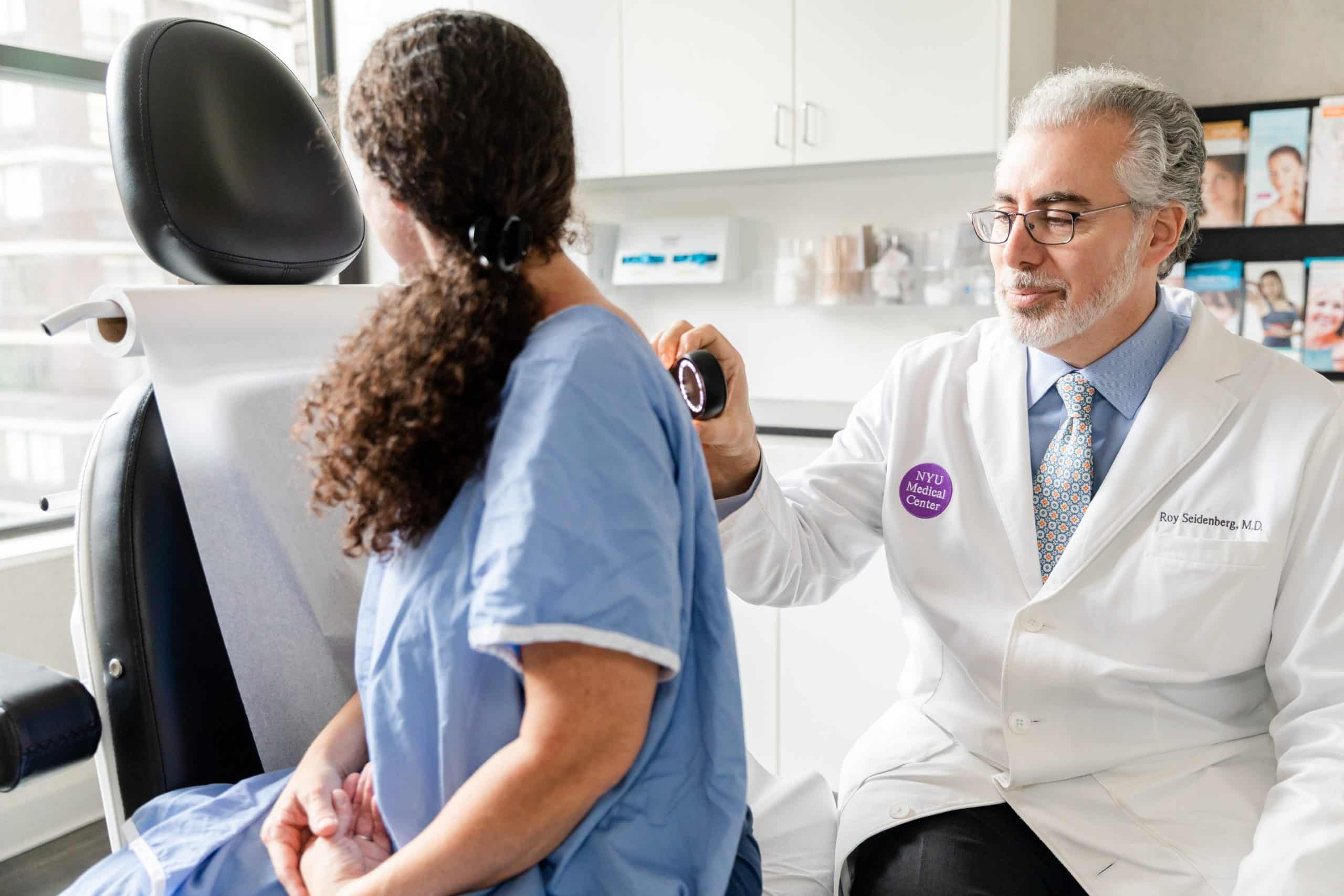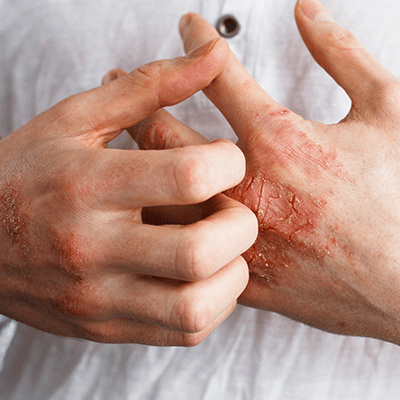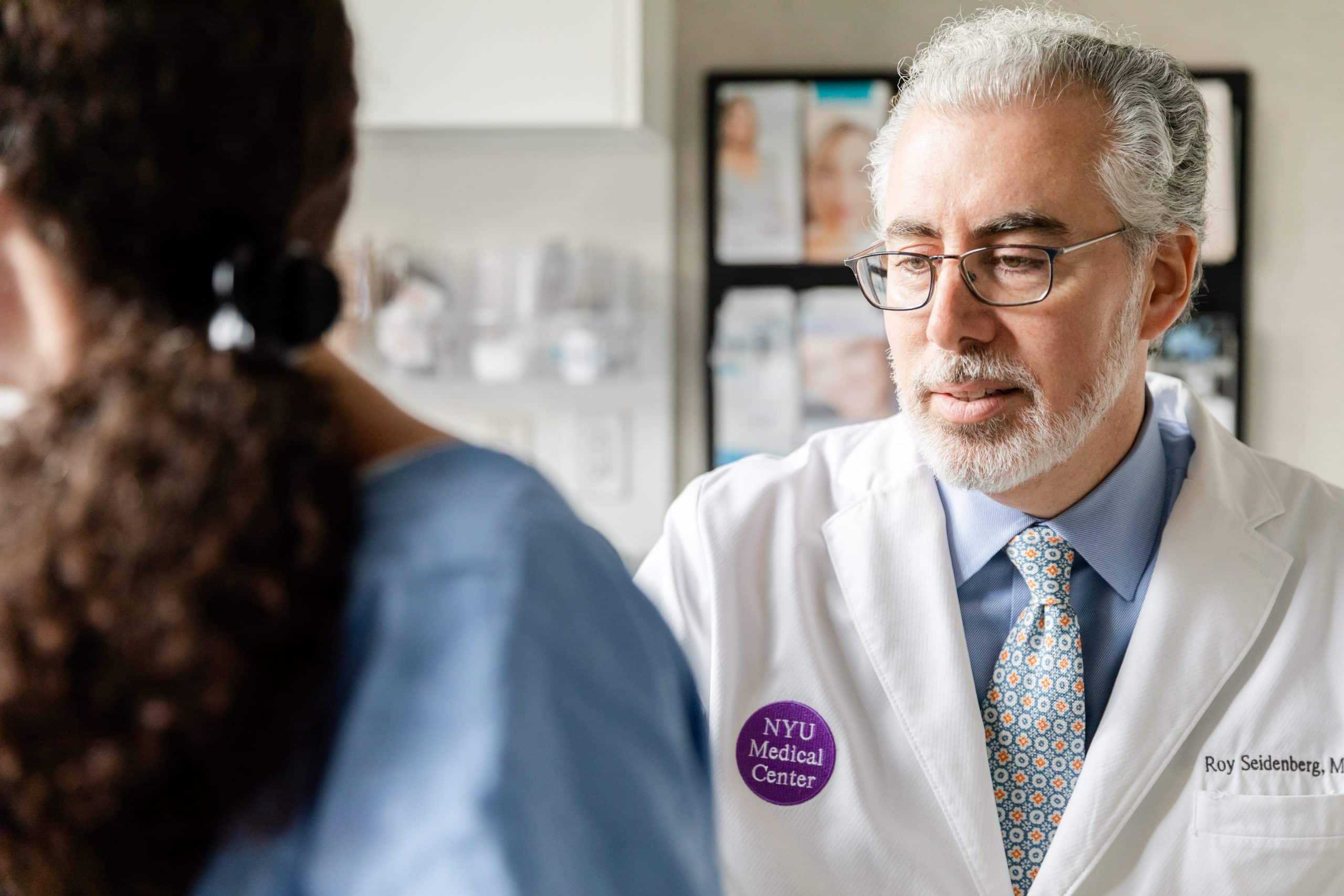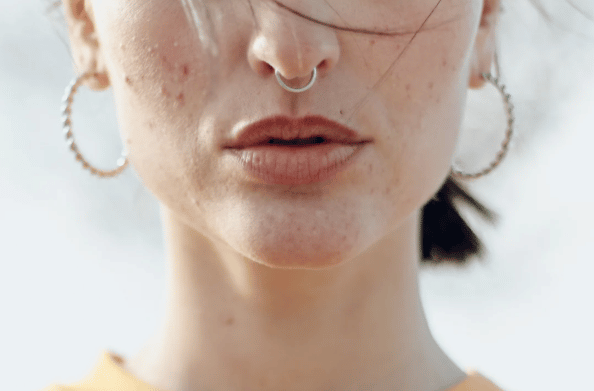Homepage // Blog / How to Treat a Skin Boik: Identification, Prevention, & When You Should See a Dermatologist
How to Treat a Skin Boil: Identification, Prevention & When You Should See a Dermatologist
Whenever a bump appears on the skin, it can be concerning. If that bump gets bigger, redder, and painful, the concern increases. What could it be?
Dr. Roy Seidenberg of the Laser & Skin Surgery Center of New York provides an overview of a boil, one of the most common types of bumps that can develop on the body. While boils are not typically a serious medical concern, they can grow quite large and be quite painful. It is helpful to know how to identify a boil and what you can do to treat it effectively.

What is a boil on the skin?
Dr. Seidenberg explains that a boil, medically known as an abscess or furuncle, is a localized bacterial infection in the skin. Unlike cellulitis, where the infection and resultant inflammation is dispersed throughout the area and presents as a red plaque, a boil manifests as more of a localized bump, filled with pus. It is often red and painful.
When boils form in clusters, it is called a carbuncle. A carbuncle often indicates a more severe infection that can lead to physical symptoms like fever and chills. These clusters are also more likely to leave scarring behind. Schedule an appointment with your dermatologist right away if you suspect you have a carbuncle as these usually require medical attention. To learn more about boils and why the occur, visit ncbi.nlm.nih.gov
Where do boils occur?
Boils often develop from an infection in a hair follicle. While they can occur anywhere on the body, they most commonly appear in areas where there is hair, sweat, and friction. Frequent locations are the face, neck, armpits, thighs, and buttocks.
Why do boils occur?
According to Dr. Seidenberg, most boils are caused by bacteria, usually staph or strep. Boils may also be due to atypical mycobacteria or fungus, or even viruses which are less common and slower growing.
The staph bacteria that lead to boils is found on the inside of the nose and can spread to other areas of the body. Infection can also get into the body through an injury or insect bite that creates an opening in the skin’s surface.
People who have skin conditions like acne, psoriasis, or eczema might also be more vulnerable to boils due to broken skin. It is important to manage these chronic conditions to avoid complications. The Laser & Skin Surgery Center of New York offers a wide range of treatments for even the most stubborn skin conditions.

Is it a boil or acne?
In some cases, a boil might be mistaken for an acne breakout. However, different bacteria cause these two separate conditions. Roy Seidenberg, MD warns that the two can look quite similar but since boil treatment is different, it is important to correctly identify the breakout.
A larger inflammatory acne lesion, known as a nodule or cyst, can look identical to an abscess. This is especially true if there is only one large lesion. If a patient has a sudden flare of acne pustules and pimples, it could be a bacterial folliculitis – where the infection presents superficially in multiple follicles. If you are unsure whether your breakout is a boil or acne, schedule an appointment with your dermatologist for a proper diagnosis.
How can I treat my boil?
The mainstay of treatment is draining the abscess, according to Dr. Seidenberg. This also allows a culture to be performed. Oral antibiotics are helpful to prevent spread, but often do not penetrate into the pocket of pus.
For a single, small boil, home treatment may be sufficient. This includes washing the area with soap and water twice a day to prevent the spread of the infection. You can apply a warm, wet compress to the area multiple times a day as well, to encourage the boil to open and drain. In some cases, boils will resolve on their own within a couple of weeks.

When should I call my doctor?
Dr. Seidenberg offers a few tips to help lower your risk for developing a boil:
- Clean any new cuts or broken skin right away to diminish your risk for infection
- Treat any underlying skin condition that has broken skin, such as eczema
- Avoid tight synthetic fabrics and switch to looser or cotton undergarments
- Apply moisturizer before putting on compression shorts to decrease skin friction
- Shower right after exercising to wash away the sweat
Dr. Seidenberg notes that bacterial folliculitis on the buttocks and thighs is common for people who wear compression garments while working out. If you do this, make sure you take steps to lower your risk, such as using moisturizer or showering immediately after a workout.
Schedule Your Skin Consultation at our New York City office today
Boils are not a serious medical condition in most cases. However, they can be quite painful and very large boils may leave scarring behind. Medical treatment is available to drain the boil and manage the infection. Contact our office to schedule your appointment at our medical clinic today.
Next, read about…
Revolutionize Your Skin with Micro-coring: The Ultimate Solution for Sagging Skin
Homepage // Blog / Revolutionize Your Skin with Micro-coring: The Ultimate Solution for Sagging SkinAre you troubled by loose, sagging skin and yearning for a tighter, smoother, more youthful complexion? Micro-coring is a revolutionary technique that uses your skin’s...
Laser Skin Tightening: What Is It and How Long Does It Last?
Homepage // Blog / Laser Skin Tightening: What Is It and How Long Does It Last?Laser skin tightening is a cosmetic procedure that uses heat to promote the natural production of collagen and elastin, two proteins that firm and plump skin. With proper care, results can...
5 Ways to Treat Facial Spider Veins
Homepage // Blog / 5 Ways to Treat Facial Spider VeinsLaser and light treatments offer safe, non-invasive, and effective solutions to reduce the appearance of facial spider veins. The Vbeam Perfecta and Prima, Excel V Laser, Cynergy, and other laser and energy-based...



